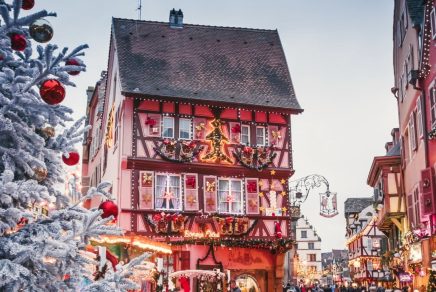What Provence like? Think chilled rosé in the sun, perched villages, limestone cliffed buffed by the strong Mistral winds. With the backdrop of the Great Blue Mediterranean Sea, that mythical sea of incomparable azure, on one side, and the golden valleys strewn with olive trees and vineyards on the other. Quite convincing, isn’t it? Air Transat was on location to discover the region’s best and brightest, as well as its underrated spots, to create the perfect itinerary for your Provence trip this summer.
Marseille

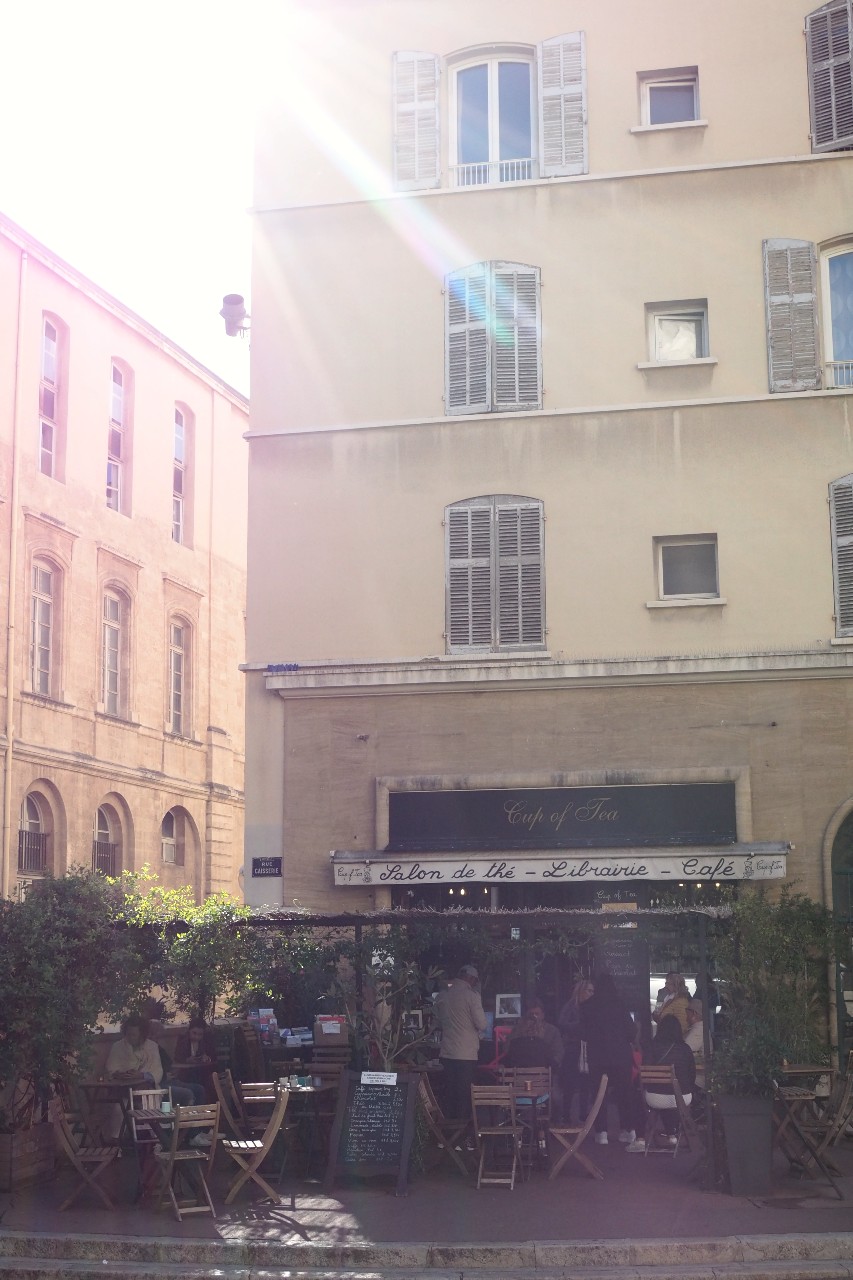

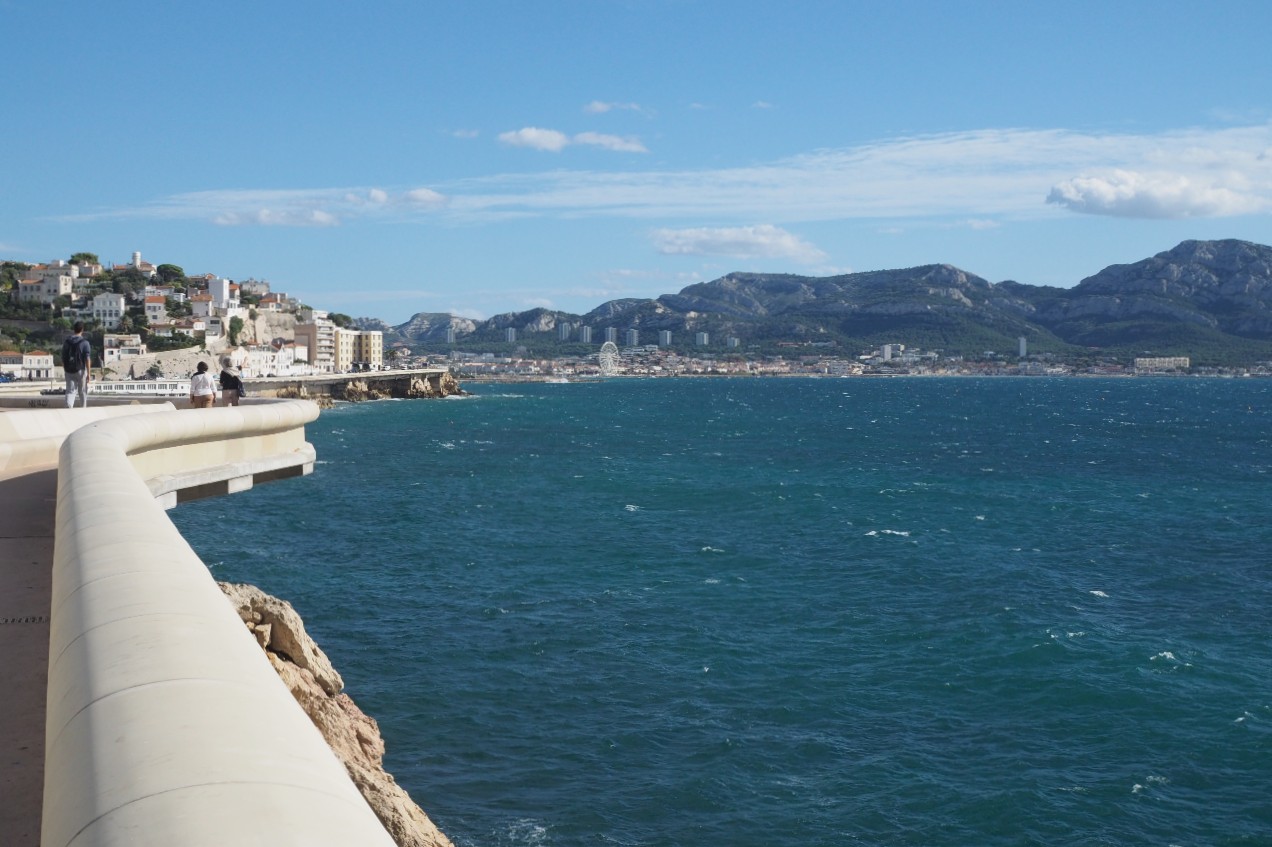
The capital of Provence and vastly underrated city has undergone somewhat of a renaissance over the last decade. It’s well worth a few days’ visit. Marseille enlivens the senses, all senses, rhythmed by its inimitable atmosphere. To begin with, the Vieux-Port is the place to go, of course, to see the fishermen selling their morning catch in the market square below the Norman Foster-designed Ombrière. Here, the analogy of Marseille is almost perfect: maritime and social traditions dating back to the Massalia era, cohabiting with a future worthy of the highest spheres of modernity. Additionnally, this is where most cruises to the Frioul Islands and Château d’If depart from for a Marseille day trip at sea.
Of course, you have to go by bus to the peak of the Notre-Dame-de-la-Garde basilica. She’s also known as the Good Mother, guardian of sailors and fishermen. The view from its forecourt opens up on the whole region, from the open Mediterranean sea to the backcountry borders of Provence.
Other fun things to do in Marseille :
- The Noailles district to discover a mish-mash of hip and traditional, between vegan restaurants and Moroccan markets
- The Docks district and the sublime MUCEM museum
- The Panier district, Marseille’s oldest, known for its leafy bohemian alleys and fascinating history; you absolutely must eat a navette des Accoules, a sweet local treat made with orange blossom
- Corniche John F. Kennedy, where you can walk along the Mediterranean Sea and sit on the longest bench in the world; you should also stop en route at the Vallon des Auffes for a tranquil apéro by the water
- A little further on is the spectacular Cité Radieuse by Le Corbusier, a UNESCO World Heritage Site
Calanques National Park
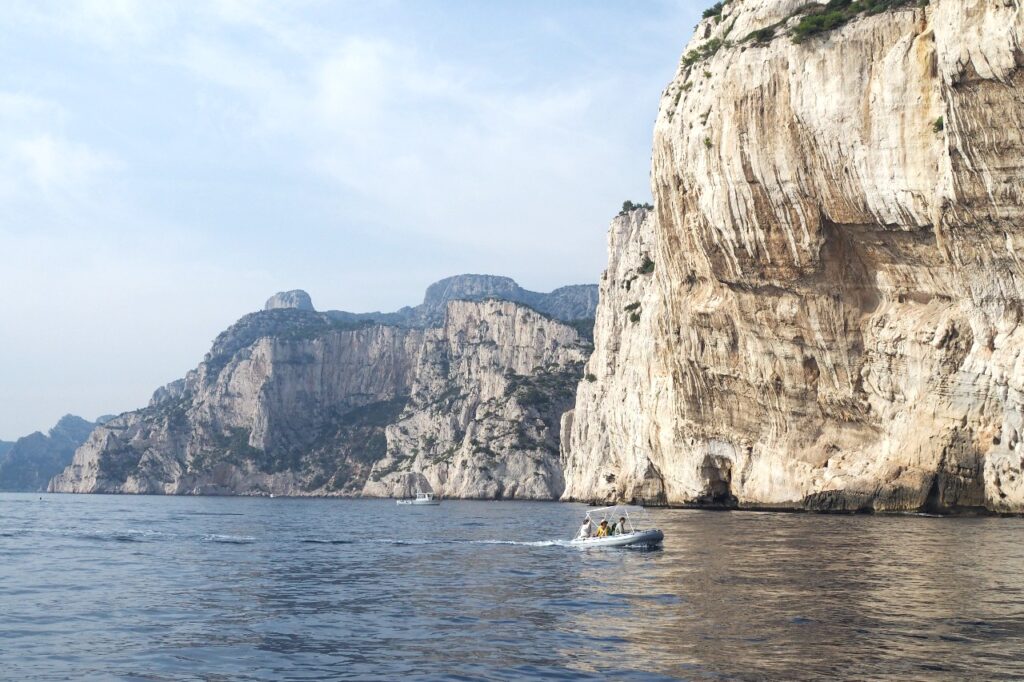
This magnificent park, promoted to national park in 2012, is one of the jewels in the proverbial crown of any Provence itinerary. The vertiginous limestone and pudding cliffs emerge the sea quite dramatically. Their silhouette is shaped by the crashing waves and the Mistral winds, which created magnificent coves that can be visited in two ways: on foot or by boat.
For the first option, there are several types of paths from “easy stroll” to “pretty much rock climbing”. We preferred the Belvédère du Sugiton hike, which descends to a tiny beach guarded by the Torpilleur, a rocky mass from which the bravest swimmers jump carelessly into the Grande Bleue. For an effortless path with no difference in altitude, you should head to Cassis and its Sentier du Petit-Prince to discover the sublime calanque of Port-Miou.
For the second option, Calanques cruises are offered from several ports in the region, notably Marseille, Cassis and La Ciotat. It’s up to you to decide how many calanques you want to see and how long you want your cruise to last! However, we recommend that you opt for a visit to the nine main calanques to get a complete overview of the geological variations and legends surrounding each one.
Fun fact: Calanques National Park is the first peri-urban national park in Europe that is both a land and sea park!
Noteworthy Provence wineries for rosé wine

The vineyards known as Côtes de Provence extend over three departments (Var, Bouches-du-Rhône and part of the Alpes-Maritimes) and therefore include several grape varieties. Ninety percent of the wine produced here is rosé! The vineyards are typically Provençal, bordered by the sea, lined by limestone mountains, dried by the Mistral wind and warmed by the Midi sun. These are some of the best conditions for winemaking: a climate that is both dry and hot.
It is therefore difficult to find a vineyard that does not deserve a visit. But if we had to pick favourites…
Domaine La font des pères
Domaine La font des pères is a magnificent place, perched in the heights of Bandol! It is also a property that offers oenology courses, vineyard visits, as well as bed & breakfast packages for spending the night surrounded by the vines. Not to mention the on-site pétanque court! An unforgettable experience.
Mas Sainte-Berthe
Nestled at the foot of the famous Château des Baux-de-Provence, Mas Sainte-Berthe covers 40 hectares in the AOP Les Baux de Provence. The rosés are particularly tasty, thanks to Grenache noir, Syrah, Cabernet Sauvignon or Mourvèdre and Cinsault. The whites and reds are also excellent and boast surprising character. The self-guided discovery trail in the vineyards is very pleasant in the late afternoon, when the sun starts to set.
Château Revelette
A must-do on any Provence trip for wine enthusiasts! At Château Revelette, grapes are organically grown and manually harvested. This vineyard in the Coteaux d’Aix-en-Provence appellation is known in Canada for its range of rosés and reds. They are both even better on location!
Château La Coste
A vineyard like no other! There are several delicious restaurants at Château La Coste, but also a tour focused on architecture and visual arts of all kinds (Louise Bourgeois! Alexandre Calder! Frank O. Gehry! Bob Dylan! Oscar Niemeyer! Tadao Ando!) for a multi-sensory discovery. Oh, and yes, the wine is very good, too!
Toulon

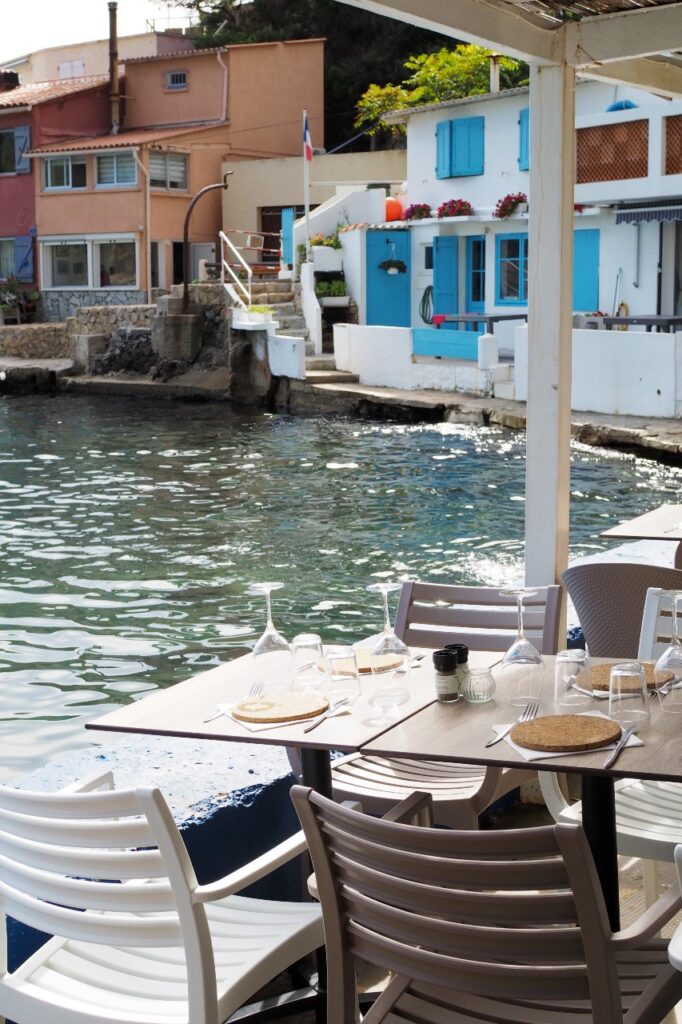
Once known for its navy heritage, Toulon is now a multi-faceted city that wishes to both honour this military heritage (still very much alive!) and to broaden its cultural, gourmet and epicurean horizons. Of course, the National Maritime Museum is a mandatory stop to retrace over 400 years of maritime history in Provence. Then, stroll along Mourillon beach, lined with gardens, children’s playgrounds, sunny terraces and, above all, sunshine. Lastly, visit the charming old town, with its great cafés (Le Chantilly, in front of the Fontaine des 3 Dauphins), its neo-classical buildings (the Opéra!) and its Halles gourmandes (with rooftop!).
A little further out is to the charming Anse Méjean. Quiet, picturesque, far from the city’s hustle and bustle, this magical place is almost reminiscent of Greece with its white-washed houses and blue hues. Eat at l’Escale restaurant while you’re there and enjoy the waterfront patio. Hands down one of our favourite meals on this Provence trip!
Aix-en-Provence
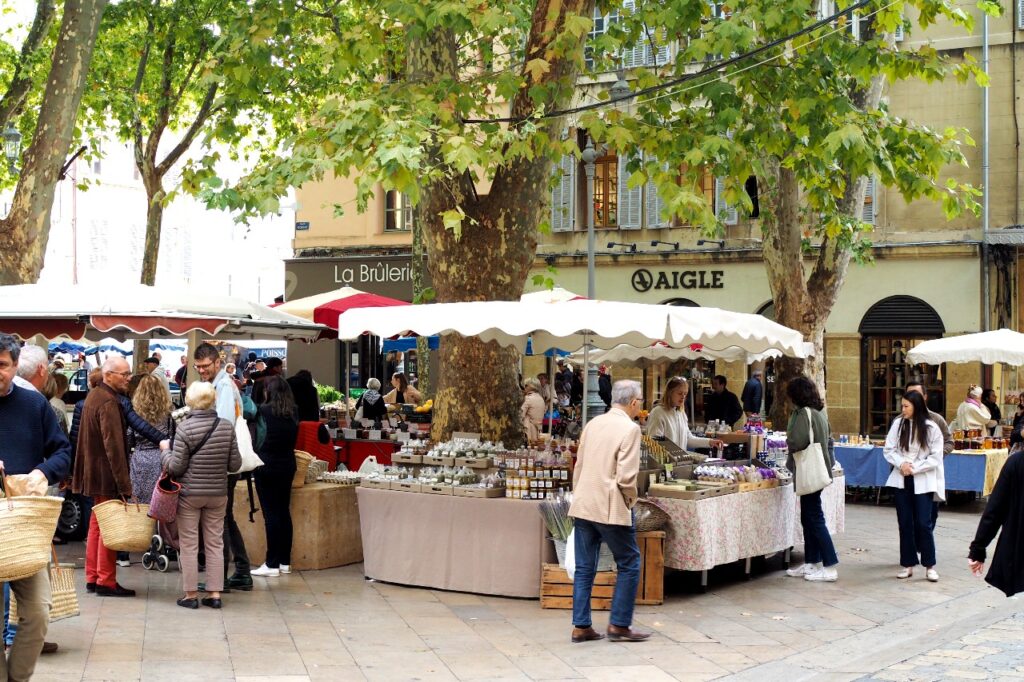

Aix is a city of culture, gastronomy and beauty, and should be a high priority on any Provence trip. We walked in the footsteps of the painter Cézanne, strolled through the charming medieval old town, visited the magnificent Hôtel de Caumont in the heart of the 18th century quarter. Aix is a maze of a city, which reveals itself through its pretty squares, each as charming and leafy as the next. All of this, of course, punctuated by farmer’s markets selling typical Provencal products for which the city is famous. Think lavender, cheeses, dried herbs, saucissons and other French goodies.
Some of our favourite things to do in Aix en Provence:
- Les Madeleines de Christophe (if there is a queue, the wait is worth it!)
- La méduse wine bar
- The iced coffee at Mana Espresso
- The pretty terrace of the café La Belle Époque
- Rose et Marius for its hand-made perfumes and soaps
Historic villages of Luberon for an idyllic Provence trip
A region made for gourmet pleasures, the Luberon is a place of indefinable magic, golden light, comforting aura that we cannot resist! Between the olive oil mills, the vineyards, the yellow stone farmhouses, the welcoming inns and the millennial abbeys surrounded by lavender fields… The perfect Provence trip postcard is complete and does not disappoint. Amongst the many attractions, the perched villages of the Luberon are at the top of the list with their exceptional architecture and charm; several of them are also on the official list of the “most beautiful villages of France”.

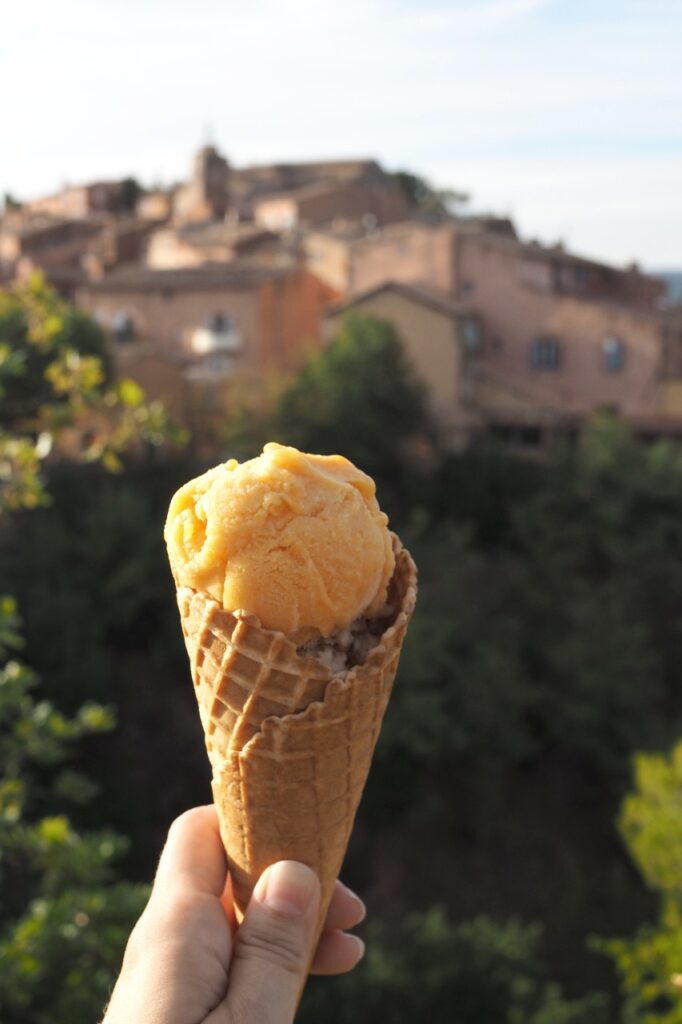
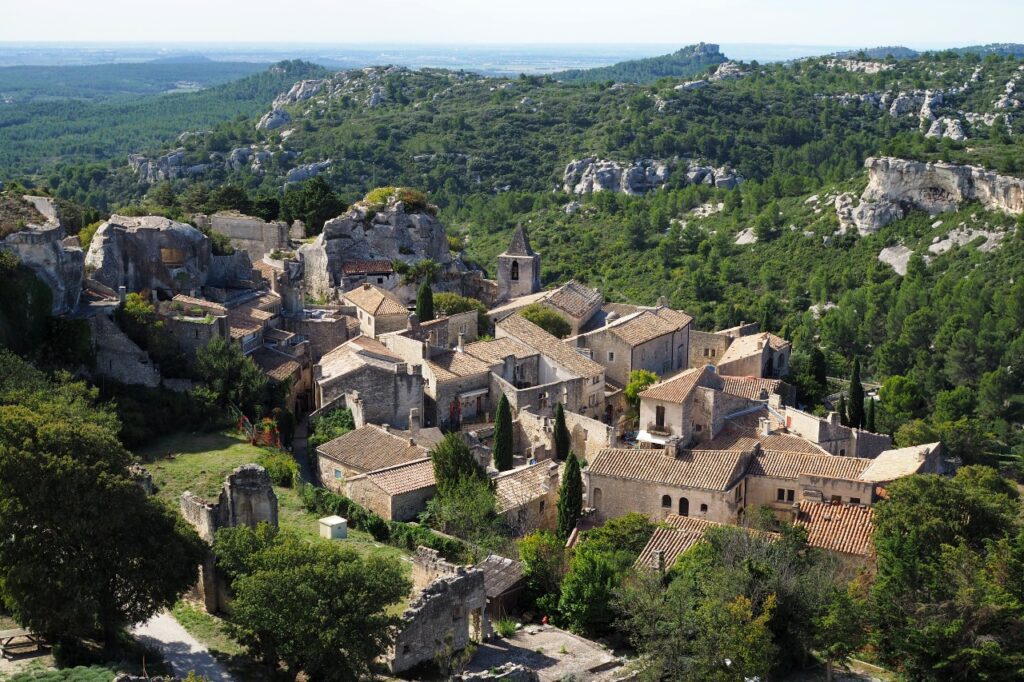
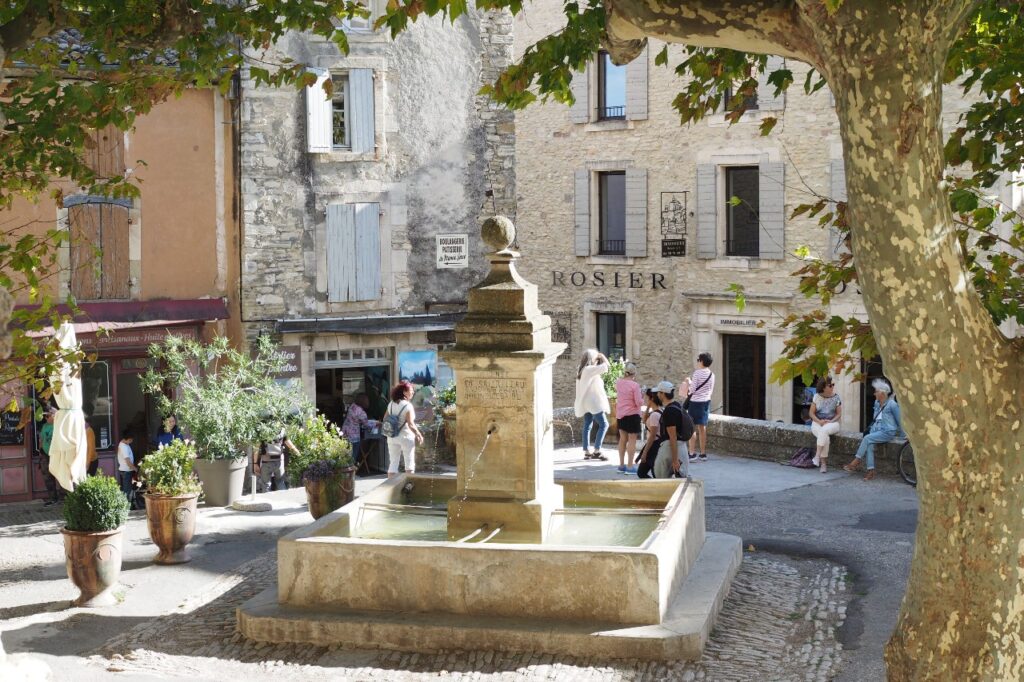
Lourmarin
The village of Lourmarin appears in all its splendour as you drive along small roads through vineyards and historic farmhouses. Its calades (narrow streets in Provençal) are each as attractive as the next, with their manicured flora and their calm that is only interrupted by the sound of crickets in summer. This is Albert Camus’ adopted village, where he lived his best years and wrote many of his most beautiful novels; he is even buried in the cemetery on the outskirts of the village. He said of Lourmarin that it was a land of “overwhelming beauty”.
Roussillon
Welcome to the “Colorado of Provence”! Roussillon is an astonishing village whose heritage is closely linked to the exploitation of the natural ochre of its soil. This vast ochre deposit explains the sometimes orange, sometimes pink pigmentation of its buildings. The Sentier des Ocres (Ochre Trail) is a must-see. On the heights of the village, on the terrace of the Saint-Michel church, it is even possible to see the summit of Mont Ventoux on a clear day.
Gordes
This citadel-village overlooks the surrounding plain and offers visitors an exceptional view of the Luberon massif. The best view of Gordes is from the observatory on the road to Cavaillon, and once inside the walls, we suggest a coffee on the suspended terrace of the café named Cercle des républicains.
Les Baux de Provence
Perched on a rocky spur in the Alpilles massif, this special place has one of the most stunning architectural ensembles of Provence. The castle grounds that remain today date back to the Middle Ages. Baux-de-Provence was then the stronghold of a feudal domain controlling 79 towns and villages in the surrounding area. The visit is divided into two parts. Firstly, the castle ruins and its history full of adventures. Secondly, the pedestrian village with its inviting patios and souvenir shops. A wonderful discovery!


![Marseille_COUVERTURE[1] Marseille COUVERTURE](/wp-content/uploads/elementor/thumbs/Marseille_COUVERTURE1-rehd969x0bx0iqrlg0e2y32782i88bao83rijrgn6w.jpg)
![voyage_de_ski_dans_les_alpes_-_ski_trip_in_the_french_alps_-_COUVERTURE[1] Voyage de ski dans les Alpes - Ski trip in the French Alps - Couverture](/wp-content/uploads/elementor/thumbs/voyage_de_ski_dans_les_alpes_-_ski_trip_in_the_french_alps_-_COUVERTURE1-e1763071913669-renyn82g4stc735hil5xc0ospu44nnis74gdvy5d9k.jpg)

